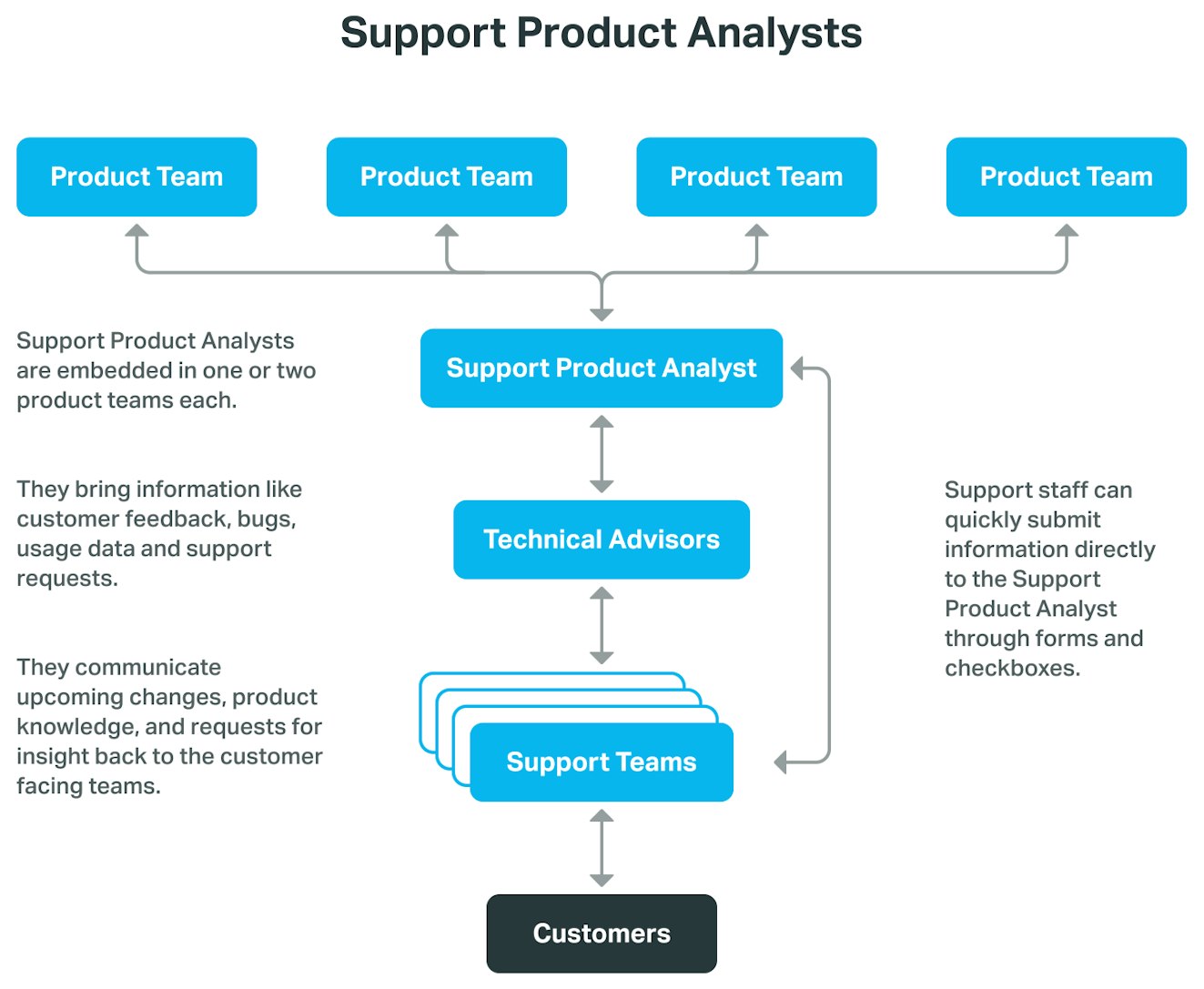In a small SaaS company, deep understanding of your customers is almost automatic. Developers answer support queries, designers ask customers for feedback, and every crisis is an all-hands one.
Over time, though, most business roles become increasingly specialized, and maintaining close contact with the customer takes deliberate effort. At Mailchimp, product teams relied on Technical Advisors to be their conduit to insights and issues gathered from the customers.
However, Civvy Ornellas, Mailchimp’s Senior Manager of Support Product Analysts, remembers that, "As the company began to grow, it became too much of a burden for the Technical Advisors, and some of the communication began to break down."
In 2015, the opportunity arose for Ornellas to take on a new role as the first Support Product Analyst. The plan was to give her the time and resources to facilitate communication between the people designing and building the products and the frontline teams who worked directly with customers.
Initially that meant a lot of emailing back and forth, but the role quickly expanded as people realized the benefits of faster knowledge sharing and closer cross-team connections.
Ornellas joined Mailchimp in a technical support role before moving into the Quality Assurance team, giving her a deep understanding of both the customer perspective and the internal workings of Mailchimp’s products as she moved into the Support Product Analyst role. I recently spoke with Ornellas about her team and how they forge stronger connections between customer-facing and product teams.
What does a Support Product Analyst do?
Day to day the work of a Support Product Analyst might include:
Attending product meetings to understand product implementation details and provide relevant customer insights and concerns.
Communicating with the Technical Advisors on upcoming product changes and how they may impact customers.
Reporting relevant issues and feedback from customer support departments to the product teams for their review.
Meeting with frontline team members to help them collect and share customer feedback more effectively.
Gathering and analyzing data to build a more comprehensive understanding of customer behavior and product usage.

Each Support Product Analyst is "embedded" with one (or more) Mailchimp product teams, to help them build their knowledge of that particular area and to form relationships that allow for honest communication.
Each analyst is responsible for communicating about their particular product areas, and the team as a whole is a resource for all areas of Mailchimp to gain easier access to customer knowledge.
To reduce the burden on Support staff to collect and collate information during their busy work days, Mailchimp implemented two simple options:
A simple internal form that submits Support team questions, insights and concerns directly to the Support Product Analyst team, who then combines that with other data to build a clearer picture.
A check box in the help desk tool that allows Support staff to flag any given conversation as relevant feedback, which the Support Product Analysts review, too.
A team of 10 (at time of writing), the Support Product Analyst role has expanded significantly. The SPA team sits between the product teams (approximately 22 groups) and the Technical Advisors who are themselves a resource and bridge to the various support teams. Ornellas jokingly refers to her team as "double agents"— working diligently for both sides.
Benefits of a Support Product Analyst team
Ornellas is proud of the results her team has achieved in improving the speed at which Mailchimp’s product teams can address issues with their products: "We resolved 103% more issues over the last year, compared to the prior year."
By making it easier for Support teams to collect useful information, packaging that information with relevant data, and communicating it effectively to the people who can take action, the release process is significantly shortened.
Beyond issue resolution, Ornellas sees other key impacts of her team:
Creating a better relationship between product and service teams, leading to products that better meet customer needs.
Giving a voice to parts of the company that may struggle to be heard, which leads to more informed decision making.
Improving the customer experience by helping turn their feedback into product and service improvements.
One challenge for the Support Product Analyst team is that much of their work is almost invisible to the company. When they use data to convince product teams to move a release date to a quieter window, or successfully prepare the customer service reps for possible tricky scenarios, the end result is that everything continues smoothly.
Finding ways to report on their successes and measure the impact is an ongoing project.
Who makes a good Support Product Analyst?
At Help Scout we talk a lot about career paths for customer service folks, and a Support Product Analyst role is a great fit for the right kind of support person. When hiring for her team, Ornellas looks for people who are:
Comfortable dealing with data, and who can separate their personal feelings from what the data shows
Excellent communicators in person and through text
Strong relationship builders
Technically competent at troubleshooting and able to understand and talk with people across the organization, from lead engineers to non-technical frontline staff
Working effectively with customers requires many of these skills and brings the additional benefit of deep product knowledge. Of the 10 people currently on the Support Product Analyst team, nine came from the broader Mailchimp support organization.
Applying Mailchimp’s Support Product Analyst model to your team
You may not be at Mailchimp’s scale, but you do still need to know more about who your customers are, how they think about you and your service, and what problems they run into. Here are a few guidelines to consider.
Be deliberate about communication
When teams get busy, they tend to spend less time sharing knowledge. Make communication a formal part of your team’s job descriptions, and give them guidance on how to do it (for example: regular meetings, reports, emails, etc.).
Don’t underestimate the value of relationships
Assigning specific people to be the conduits for specific areas of the product will help, even if it’s just during one meeting a week.
Identify your best communicators
Who are the people on your Support team who could be future Product Support Analysts? And who on your product teams are most interested in accepting customer input? Make them your flag bearers for communication.
Be data-informed
The earlier you can collect data, the easier it will be to show the value of an analyst role. Determine what information would create better product decisions, and task someone on your Support team with collecting and reporting it. Then create time for them to perform the role.
Build the bridge you need
How wide is the gap between the people building your product and the customers using it? Unless you are deliberate about bridging that gap, it will grow ever larger.
At Mailchimp, the Support Product Analyst role seems to be the right answer, and it’s a handy model to follow as you plan your own approach.
Start building that bridge today!








